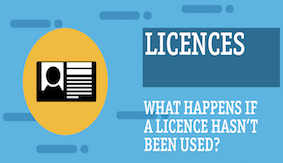One of the most common questions we are asked is ‘How does the licencing work with respect to users?’ On the surface you may think that this is a fairly simple question with an equally straightforward answer. However, it can be a bit of a minefield. Here’s what we think you need to know! The most common user licence options are: –
- Registered Users
- Concurrent Users
- Pay only for what you use
Let’s say your organisation requires 200 people to have access to the online video content you’re interested in investing in, the question that you’ll need to get clear in your mind is ‘Are these 200 registered users i.e. a licence registered directly to a person, or 200 concurrent users of the content?’
Some organisations simply register or allocate each person to a licence which means that the licence is issued whether or not that person uses the content. Others may offer what is termed ‘concurrent’ usage where, using our example, up to 200 people at any one time can have access to the system. However, it never has to be the same 200 people.
Each of these have their advantages and disadvantages and relates to how you feel the online video content will be used in your organisation. For example, where a licence is issued to a person for the entirety of the licence period, that person will always have guaranteed access to that content. This can be especially useful as in many instances people use or access their content on an ‘as needs basis’ and nothing can be more frustrating to find that at the time you need it most you’re locked out.
Conversely, concurrent use does have the advantage of ensuring that you’ve pitched your licence usage correctly insofar as whilst your organisation may well have 1,000 people you estimate that at any one time only 200 people will be accessing the content and, after all why should you pay for more licences than you need?
There is a third option based on everyone having the capability of accessing the content but you only paying for the content that is used. If you like it’s a hybrid of Registered and Concurrent Users but does have the advantage of you growing or reducing the number of licences you need to those that you actually use. Basically, it doesn’t matter how many people log-on or view content, you’ll only get charged at the point someone decides to click and watch a particular course.
At the end of the day your decision will be based on what’ll work best based on your knowledge and the culture in your organisation.



